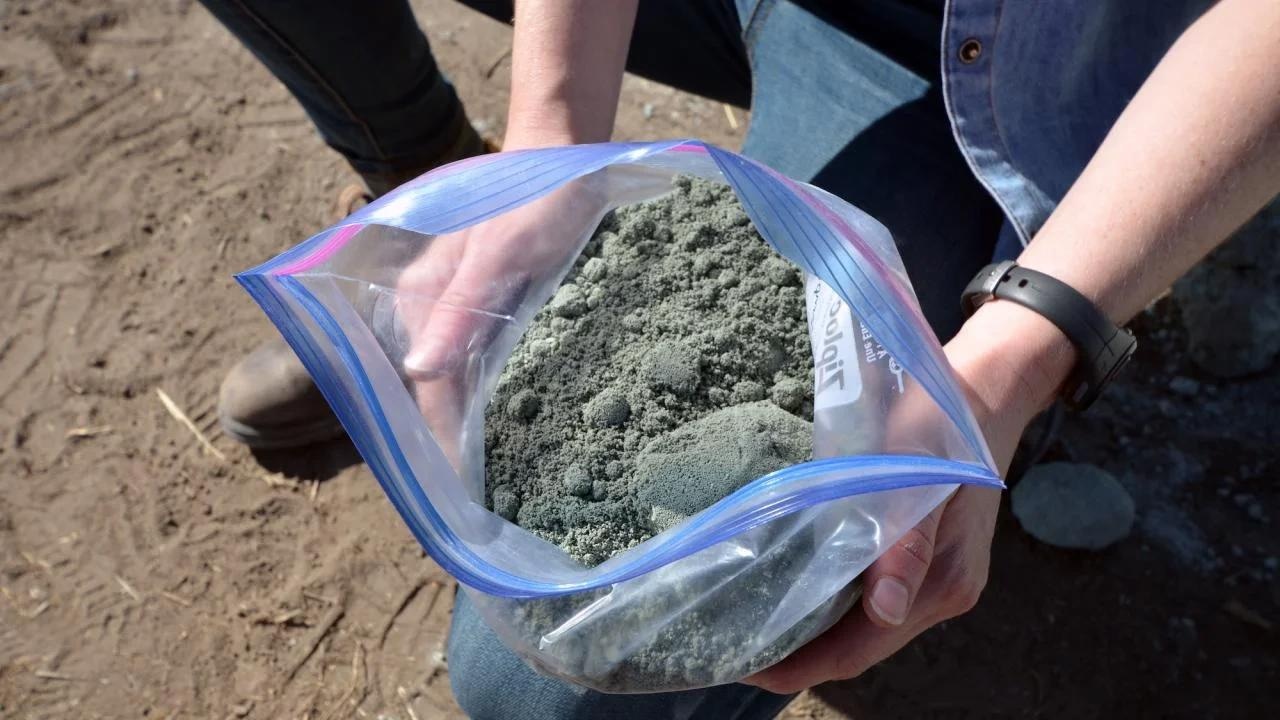A major factor in removing carbon from the atmosphere could be the addition of crushed volcanic rock to crops. Through a field study, researchers from Cornell University and the University of California, Davis discovered that this method retained carbon in the soil even when California was experiencing a severe drought. The findings were published in Environmental Research Communications.
 UC Davis researchers find adding crushed volcanic rock to farmlands can remove carbon dioxide from the air. This ‘enhanced’ rock weathering works even in dry climates. Image Credit: Amy Quinton/UC Davis
UC Davis researchers find adding crushed volcanic rock to farmlands can remove carbon dioxide from the air. This ‘enhanced’ rock weathering works even in dry climates. Image Credit: Amy Quinton/UC Davis
As rain falls, carbon dioxide from the atmosphere is drawn in and locked up by a reaction with volcanic rock. Rock weathering is a process that can take millions of years, making it too sluggish to counteract global warming.
However, rock weathering accelerates when the rock is crushed into fine dust. If distributed over croplands worldwide, this “enhanced” rock weathering has the potential to store 215 billion tons of carbon dioxide over the course of the next 75 years, according to previous studies.
However, the technique has yet to be field-tested in arid areas.
These reactions require water. Since we are interested in the global carbon storage potential of enhanced weathering, we need to understand if it can work in these drier climates and if different measurement approaches are effective. We were excited to observe carbon removal in this environment.
Iris Holzer, Study Lead Author and Doctoral Student, Department of Land, Air and Water Resources, University of California, Davis
California as a Test Case for Storing Carbon
Five acres of a fallowed cornfield in the Sacramento Valley were treated by researchers with crushed rock, including both metabasalt and olivine. In 2020 and 2021, they took measurements in the winter. Rainfall in California at the time was 41% of its historical average due to an intense drought.
The research discovered that, compared to plots without crushed rock, the ones with crushed rock stored 0.15 tons of carbon dioxide per hectare (2.47 acres) during the study. If this quantity of carbon was removed from all California crops, it would be the equivalent of removing 350,000 automobiles off the road annually, even though researchers expect differing weathering rates in different locations.
Holzer added, “We are definitely seeing evidence of weathering processes taking place on short time scales. Even the infrequent heavy rains we get in the West might be enough to drive enhanced rock weathering and remove carbon dioxide.”
The next task, according to Holzer, will be to measure and confirm carbon storage at larger scales and monitor it over time.
Drylands cover 41% of the Earth’s land surface and are growing due to climate change. According to the researchers, this highlights the need to study enhanced rock weathering in drylands.
When it comes to bending the global carbon curve, we are in a race against time. Our study demonstrates a new way to verify carbon dioxide removal via enhanced weathering, which is a critical leap forward for scaling this technology in croplands worldwide.
Benjamin Z. Houlton, Study Senior Author and Ronald P. Lynch Dean, College of Agriculture and Life Sciences, Cornell University
Mallika Nocco of the UC Davis Department of Land, Air, and Water Resources is one of the other authors.
The California Strategic Growth Council, the Grantham Foundation, Roger Sant, and Doris Matsui provided funding for the study, which is a component of the Working Lands Innovation Center. The crushed metabasalt rock was given by the mining and aggregates company SGI, a Standard Industries company, from its location in Ione, California.
Journal Reference:
Holzer, I. O., et al. (2023) Direct evidence for atmospheric carbon dioxide removal via enhanced weathering in cropland soil. Environmental Research Communications. doi:10.1088/2515-7620/acfd89